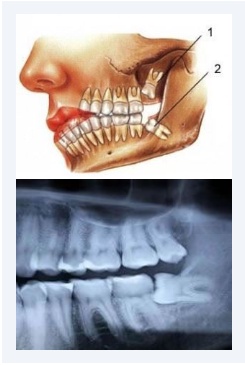Wisdom teeth, also known as third molars, typically emerge between the ages of 17 and 25. While for some, these teeth grow in without issue, for many, they can cause a host of problems. From crowding and misalignment to pain and infection, wisdom teeth often necessitate extraction. Understanding the process of wisdom tooth extraction can alleviate anxiety and prepare individuals for what to expect.
Assessment and Consultation
The journey of wisdom tooth extraction often begins with a consultation with a dental professional, such as those at Dental Extractions Berwick. During this initial appointment, the dentist will assess the position of the wisdom teeth through visual examination and X-rays. They will evaluate whether the wisdom teeth are impacted, meaning they are unable to fully emerge from the gum line, or if they are causing any issues such as crowding or infection.
Preparation
Once the decision to extract the wisdom teeth is made, the dentist will discuss the procedure with the patient and address any concerns they may have. Preoperative instructions, such as fasting requirements, may be provided to ensure a smooth extraction process.
Anesthesia
On the day of the extraction, the patient will be administered anesthesia to ensure they remain comfortable and pain-free throughout the procedure. The type of anesthesia used will depend on various factors, including the complexity of the extraction and the patient's preferences.
Extraction Procedure
With the patient properly anesthetized, the dentist will proceed with the extraction. If the wisdom tooth has fully erupted, the extraction process may be relatively straightforward. However, if the tooth is impacted or positioned in an awkward angle, surgical extraction may be required.
Using specialized instruments, the dentist will carefully loosen the tooth from its socket and remove it from the gum line. In some cases, the tooth may need to be divided into smaller pieces for easier removal. Throughout the procedure, the dentist will ensure minimal trauma to the surrounding tissues.
Closure
Once the wisdom tooth has been successfully extracted, the dentist will clean the extraction site and may place sutures to facilitate healing. Gauze pads may be placed over the extraction site to control bleeding and promote blood clot formation.
Postoperative Care
Following the extraction, the dentist will provide detailed instructions on postoperative care to promote healing and minimize discomfort. This may include:
Taking prescribed medications, such as pain relievers and antibiotics, as directed.
Applying ice packs to reduce swelling and discomfort.
Eating soft foods and avoiding hard, chewy, or spicy foods that may irritate the extraction site.
Avoiding strenuous activities and smoking, which can impede healing.
Follow-Up
It is essential for patients to attend follow-up appointments as scheduled to ensure proper healing and address any concerns that may arise. During these appointments, the dentist will monitor the healing process and remove any sutures if necessary.
Conclusion
Wisdom tooth extraction is a common dental procedure that can alleviate pain, prevent infection, and preserve oral health. By understanding the process of wisdom tooth extraction, patients can feel more confident and prepared for their procedure. Whether it's a routine extraction or a more complex surgical procedure, dental professionals like those at Dental Extractions Berwick are committed to providing safe, effective care to their patients.
In conclusion, while the thought of wisdom tooth extraction may be daunting, knowing what to expect can help ease anxiety and ensure a smooth recovery. With the guidance of skilled dental professionals and proper postoperative care, individuals can maintain optimal oral health and enjoy a pain-free smile for years to come.


No comments yet